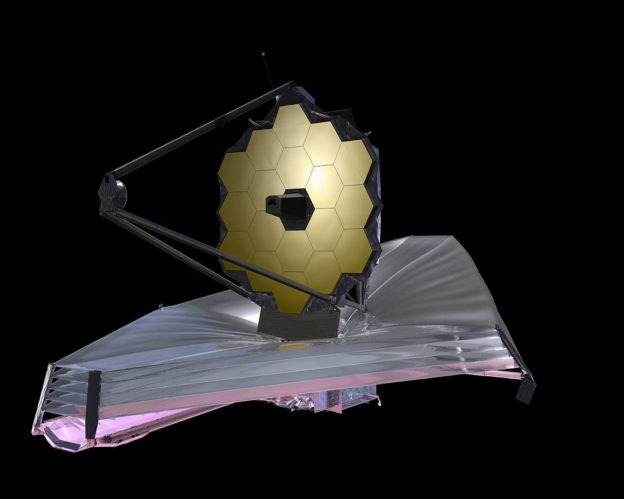
Detectors fail, even the most powerful Webb Space Telescope. NASA recently announced that the NIRISS instrument of the Webb Telescope cannot operate due to a software failure. At present, the hardware is not in danger, and other instruments are also in good condition, but the affected scientific observations will be rescheduled.
In January last year, the Webb telescope arrived at the L2 Lagrangian point of the sun-earth system at least 1.5 million kilometers away from the earth, and began to put into scientific operation in July of the same year, and began to perform ultra-clear imaging of a large number of celestial bodies.
But this $10 billion space observatory was not all smooth sailing. In May last year, one of the main mirrors of the Webb telescope was hit by a micrometeoroid, causing obvious damage, but the team said that the optical performance of the telescope was still twice the minimum requirement; In November, the telescope’s mid-infrared instrument (MIRI) experienced a software failure and suspended operations in November; last December, the attitude control system that controls the telescope’s pointing also triggered a software failure, and it took two weeks of repairs before the telescope was put back into observation.
Most recently, NASA reported that a communication delay inside the Near Infrared Imager and Seamless Spectrometer (NIRISS) caused the flight software to time out. The instrument is currently unavailable for scientific observations, and the team is working to determine the cause. There is no other indication that the telescope hardware is at risk, and other instruments are in good condition, except that the NIRISS instrument is designed to capture light in the wavelength range 0.6 microns (visible red) to 5 microns (mid-infrared), and affected science observations will be rescheduled .
Normally, NIRISS operates in four different modes: it can act as a camera when other instruments are occupied by the mission; it can analyze light signals to study the atmospheres of small exoplanets; it can perform high-contrast imaging; A mode tailor-made for a galaxy far, far away.
Fortunately, these are just minor problems. After all, the Hubble telescope has been operating in space for more than 30 years. We just need to wait for NASA engineers to fix the fault and send good news from the ground.
(First image source: NASA)
Further reading:


